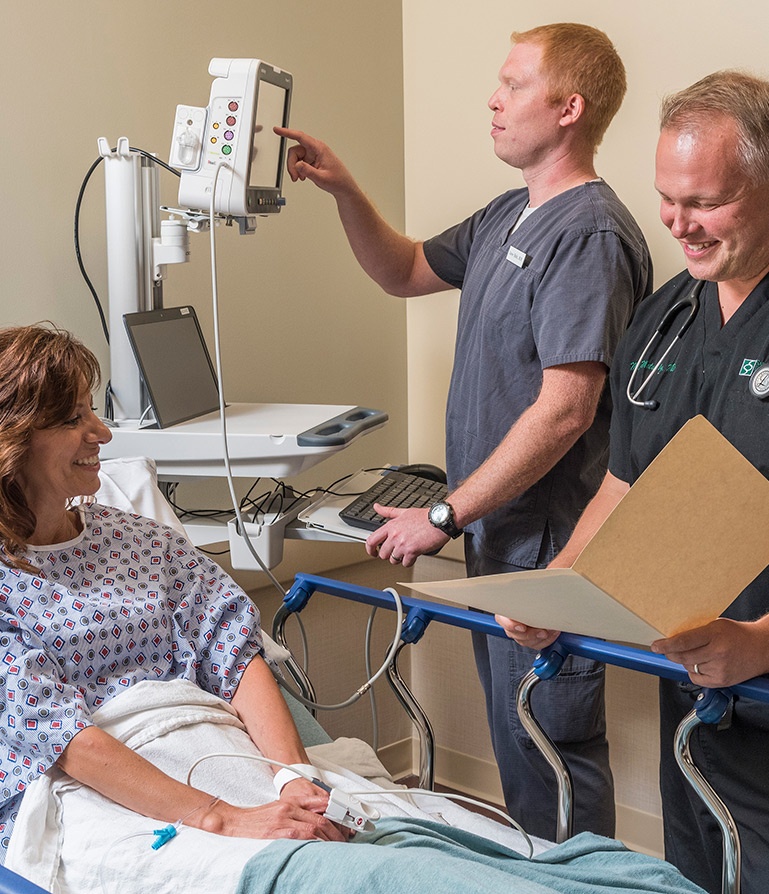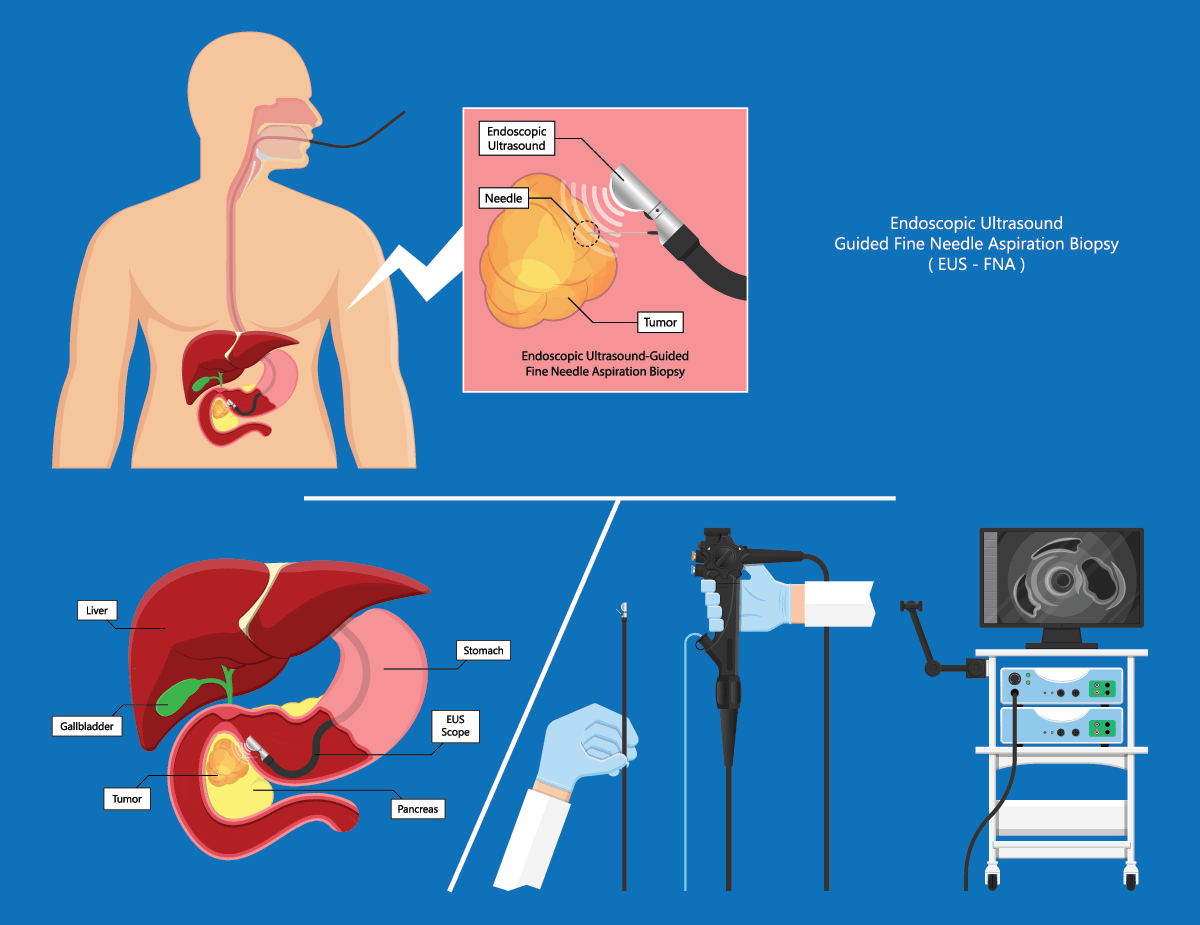procedures
Endoscopic Ultrasound (EUS)
What you should know about endoscopic ultrasound (eus)
What is an endoscopic ultrasound?

An endoscopic ultrasound, EUS, is an outpatient procedure used to closely examine the tissues in the digestive tract. These tissues can be blood vessels, gall stones both inside and out of gallbladder, pancreas, rectum, tumors, and lymph nodes. The procedure is done using a modified endoscope with a tiny ultrasound device equipped at the end of the endoscope. The ultrasound sensor sends back visual images of the digestive tract to a screen, allowing the physician to see deeper into the tissues and the organs beneath the surface of the intestines. An EUS allows the physician to get a much clearer view of an area, making this a very reliable test and preferable to more invasive procedures.
Why is an eus done?
This procedure helps your doctor evaluate tissues at a deeper level than a stand endoscopy. This includes organs that on not typically visualized, I.E. pancreas, gallbladder, liver, lymph nodes and submucosal lesions. It is also used to stage malignant tumors.
Your doctor might use EUS to obtain a biopsy or small tissue sample. A biopsy helps your doctor distinguish between cancerous and non-cancerous tissues. Biopsies are taken for many reasons, and your doctor might order one even if they don’t suspect cancer.
What preparations are required?
It is very important to stop eating and drinking at the times noted in your instructions. Please pay close attention to these instructions to avoid delaying or cancelling your procedure. Tell your doctor in advance about any medications you take since you might need to adjust your usual dose for the examination. Discuss any allergies to medications as well as medical conditions such as heart or lung disease.
What happens during an eus?

Your doctor might start by spraying your throat with a local anesthetic or giving you anesthesia to help you relax. You'll then lie on your side and your doctor will pass the endoscope through your mouth and into your esophagus, stomach and duodenum. The endoscope doesn't interfere with your breathing, Most patients find the test only slightly uncomfortable, and many fall asleep during the procedure.
What happens after eus?
You’ll be monitored until most of the effects of the medication wear off. Your throat might be a little sore, and you might feel bloated because of the air introduced into your stomach during the test. You’ll be able to eat after you leave unless your doctor instructs you otherwise.
Your physician will explain the results of the exam to you when the procedure is done, although you will have to wait for the results of any biopsies for the final results.
If you’ve been given anesthesia during the procedure, someone must drive you home and stay with you. Even if you feel alert, your judgment and reflexes could be impaired for the rest of the day.
What are possible complications?
Although complications can occur, they are rare when doctors specially trained and experienced in this procedure perform the test. Bleeding can occur at a biopsy site or where a polyp was removed, but it's usually minimal and rarely requires follow-up. A hole or tear in the digestive tract lining may require surgery, but this is very uncommon. Some patients might have a reaction to the sedatives or complications from heart or lung disease.
Although complications after an EUS are very uncommon, contact your doctor immediately if you have a fever after the test or notice trouble swallowing or increasing throat, chest or abdominal pain. Another possible complication is bleeding including black stools, which can occur several days after the procedure.
If you have any concerns about a possible complication, contact your doctor right away.